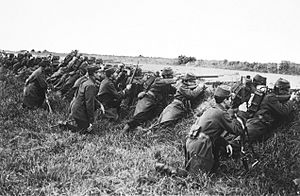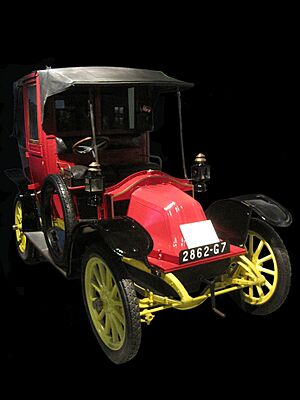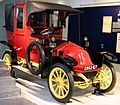First Battle of the Marne facts for kids
The First Battle of the Marne was a very important battle during the First World War. It happened in September 1914, near the Marne River in France. This battle was fought between the German Empire on one side, and the French and British armies on the other.
The battle ended with the German army having to pull back. It was a big moment because it showed that Germany's main war plan, called the Schlieffen Plan, was not working. This battle also marked the start of trench warfare, which became a major part of World War I. Many soldiers lost their lives in this battle.
Contents
Before the Battle
Before the First Battle of the Marne, Germany had a plan called the Schlieffen Plan. This plan was to quickly attack France by going through Belgium. The goal was to avoid strong French defenses along their shared border.
On August 3, 1914, German forces invaded Belgium. They moved quickly through the Belgian army. After taking important forts in Liege and Namur, two German armies, led by Generals Alexander von Kluck and Karl von Bülow, headed towards Paris.
The British army tried to stop the Germans at the Battle of Mons. They caused many problems for the Germans. However, the French and British armies eventually had to retreat. They moved back towards the Marne River and waited for the Germans there. The Germans kept advancing quickly, getting ready for the big fight at the Marne.
The Battle Begins
German Armies Get Close
The German armies got very close to Paris, about 30 miles away. The French government even left the capital city and moved to Bordeaux for safety. The Germans were so near that they could use their huge railway guns to fire shells right into Paris. These were massive cannons placed on railroad cars.
The Parisian Taxis
During the battle, the French army needed to move soldiers to the front lines very quickly. General Gallieni came up with a clever idea. He asked every taxi and driver in Paris to help. Paris had about 10,000 taxis, but only about 7,000 drivers were available because of the war.
Gallieni's plan was to use these taxis, which were a new invention at the time, to carry soldiers. The taxis drove day and night to transport troops. Drivers were paid a small fee for each kilometer they drove. By September 8, the taxis had brought about 5,000 soldiers from Paris. While this was a new idea, 5,000 soldiers was a small number in a battle with over a million men. Most of these taxi-borne soldiers were kept as reserve troops.
A Key German Mistake
A major turning point happened when the German Second Army, led by General Bülow, decided to move south. Their goal was to destroy the French Fifth Army. However, General Von Kluck, leading the German First Army, did not know about this change. He kept moving forward and fighting the French.
This created a large gap between the two German armies. The British and French forces saw this gap and launched a counterattack right into it. By September 10, the Germans had to retreat. Paris was saved from capture.
The Germans pulled back about forty miles from the Marne River. Since their original plan had failed, they were unsure what to do next. They had not been trained for trench warfare. Their only choice was to dig into the ground and wait for the Allied forces. Eventually, the trenches they dug stretched for hundreds of miles.
Images for kids
-
French soldiers rest in a forest during the battle of the Marne. Autochrome colour photograph.
See also
 In Spanish: Primera batalla del Marne para niños
In Spanish: Primera batalla del Marne para niños











